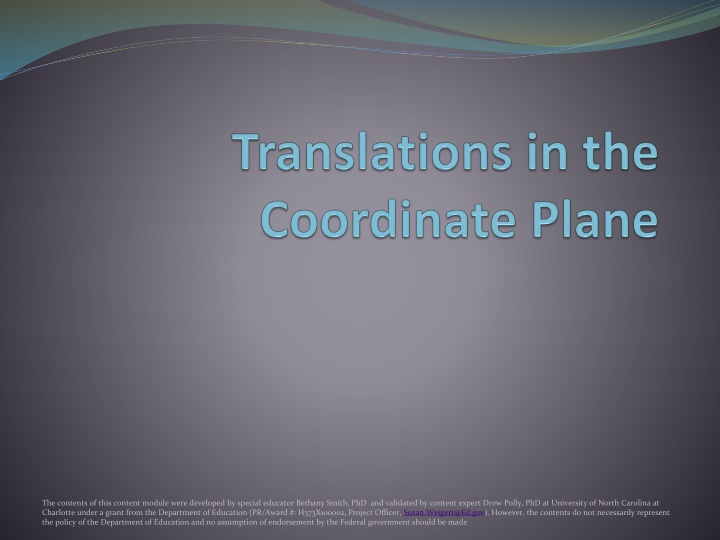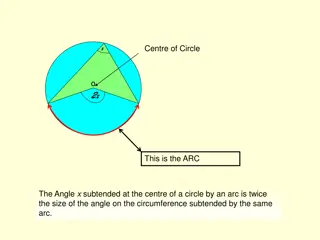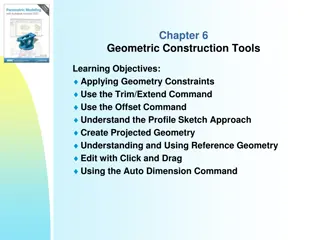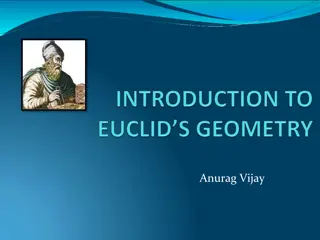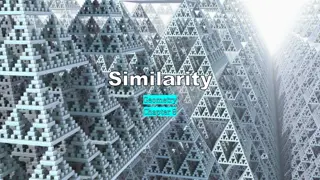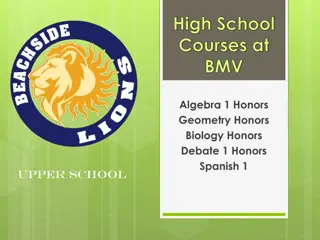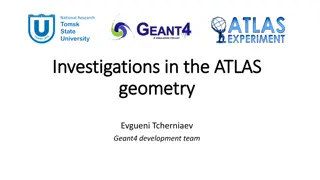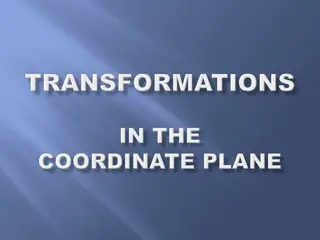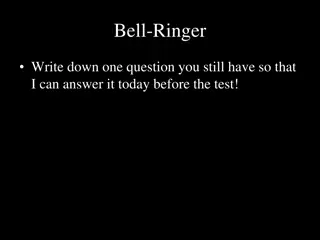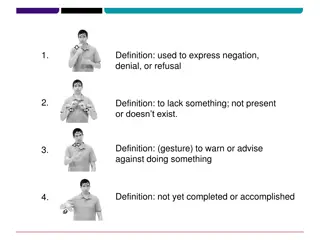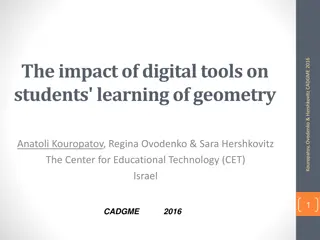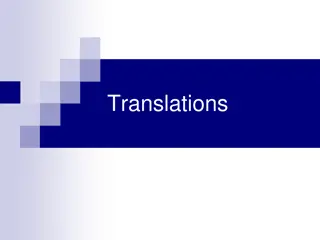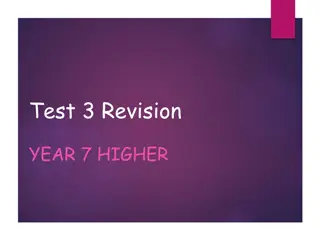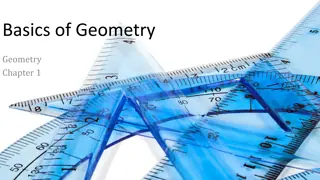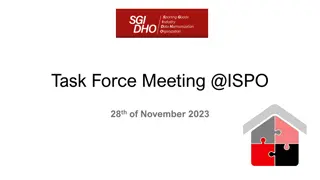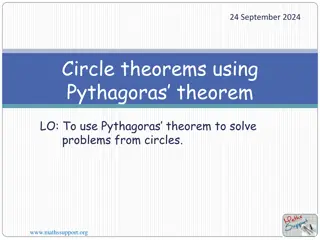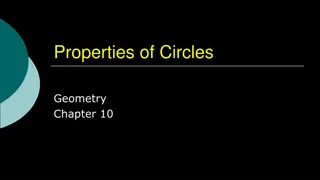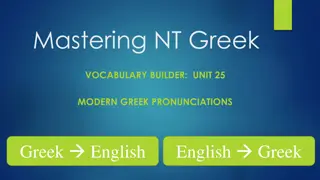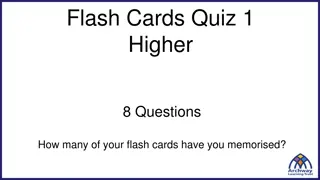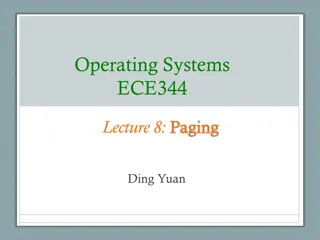Translations in Geometry
Dive into the world of translations in geometry with insights from educators Bethany Smith, PhD, and Drew Polly, PhD. Learn what translations are, how they work, and explore practical examples and application ideas. Discover the fascinating concept of moving figures along straight lines without turning, and engage students through hands-on activities like body translations, quilt making, and photo orientation tasks.
Download Presentation

Please find below an Image/Link to download the presentation.
The content on the website is provided AS IS for your information and personal use only. It may not be sold, licensed, or shared on other websites without obtaining consent from the author.If you encounter any issues during the download, it is possible that the publisher has removed the file from their server.
You are allowed to download the files provided on this website for personal or commercial use, subject to the condition that they are used lawfully. All files are the property of their respective owners.
The content on the website is provided AS IS for your information and personal use only. It may not be sold, licensed, or shared on other websites without obtaining consent from the author.
E N D
Presentation Transcript
The contents of this content module were developed by special educator Bethany Smith, PhD and validated by content expert Drew Polly, PhD at University of North Carolina at Charlotte under a grant from the Department of Education (PR/Award #: H373X100002, Project Officer, Susan.Weigert@Ed.gov). However, the contents do not necessarily represent the policy of the Department of Education and no assumption of endorsement by the Federal government should be made
What is a translation? A translation occurs when a figure slides along a line without turning The line a figure slides along MUST be a straight line The contents of this content module were developed by special educator Bethany Smith, PhD and validated by content expert Drew Polly, PhD at University of North Carolina at Charlotte under a grant from the Department of Education (PR/Award #: H373X100002, Project Officer, Susan.Weigert@Ed.gov). However, the contents do not necessarily represent the policy of the Department of Education and no assumption of endorsement by the Federal government should be made
Working through an example Translate each vertex 2 units left and 1 unit down C C Original coordinates A(1,2), B(4,2), and C(4,6) B Once translated, the new coordinates are (-1,1), (2,1), and (2,5) A The contents of this content module were developed by special educator Bethany Smith, PhD and validated by content expert Drew Polly, PhD at University of North Carolina at Charlotte under a grant from the Department of Education (PR/Award #: H373X100002, Project Officer, Susan.Weigert@Ed.gov). However, the contents do not necessarily represent the policy of the Department of Education and no assumption of endorsement by the Federal government should be made
Ideas for application Have students spread out and give them directions that cause them to translate their body (e.g., Slide one step to the right) Using construction and tissue paper, make a mock quilt using reflections, rotations, and transformation of different shapes (have a different quilts for different polygons) Use photo program and have students orient the pictures correctly The contents of this content module were developed by special educator Bethany Smith, PhD and validated by content expert Drew Polly, PhD at University of North Carolina at Charlotte under a grant from the Department of Education (PR/Award #: H373X100002, Project Officer, Susan.Weigert@Ed.gov). However, the contents do not necessarily represent the policy of the Department of Education and no assumption of endorsement by the Federal government should be made
Making Connections Exploring translations in the coordinate plane address the following 6th, 7th, and 8th grade Core Content Connectors 6.GM.1c4 Locate points on a graph 6.GM.1c5 Use order pairs to graph given points 6.GM.1c6 Find coordinate values of points in the context of a situation 6.GM.1c7 Use coordinate points to draw polygons6.NO.1d5 find given points between -10 and 10 on both axis of a coordinate plane 6.NO.1d6 Label points between -10 and 10 on both axis of coordinate plane 7.GM.1e1 Construct or draw plane figures using properties 8.GM.1f1 Recognize a rotation, reflection, or translation of a figure 8.GM.1f2 Identify a rotation, reflection, or translation of a plane figure when given coordinates The contents of this content module were developed by special educator Bethany Smith, PhD and validated by content expert Drew Polly, PhD at University of North Carolina at Charlotte under a grant from the Department of Education (PR/Award #: H373X100002, Project Officer, Susan.Weigert@Ed.gov). However, the contents do not necessarily represent the policy of the Department of Education and no assumption of endorsement by the Federal government should be made
